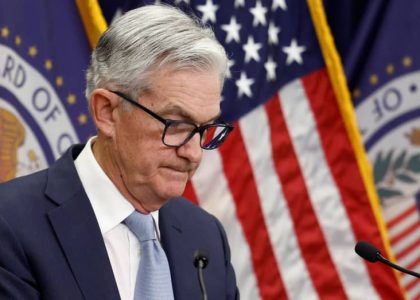The Commitment of Traders report published weekly by the Commodity Futures Trading Commission breaks down the weekly market participants into several categories. In the age of big data, we reach a point where it's easier to collect than it is to make sense of. We keep it simple at COTSignals.com by focusing our analysis on the commercial trader category of the Commitment of Traders Report. Subjectively, it makes sense that the people with a hand in producing or, consuming a given commodity have a fundamental sense of value that speculative traders simply lack. Furthermore, producers and end line users of a given commodity base their actions on the best collective models and strategies focused on their singular market. Quantitatively, we've proven the correlation and predictive value of their actions time and again.
One of the knocks against this approach is the claim that its effectiveness does not translate from commodities that come from the ground like corn, oil and gold to financial products of infinite supply like the stock indices, treasuries and currencies. Our research has proven this methodology robust across all commodity markets. In this vein, we'll look at the commercial traders' actions in the Treasury Bond futures market over the last few years, ahead of the Federal Open Market Committee meeting this afternoon.
First, let's take a look at the market's best guess for this afternoon as predicted by the CME Fed Watch indicator which is available on the CME's website.

 Now, let's dig into the meat of the story. The chart below analyzes the last 16 fed meetings. Each line represents the announcement date of the meeting. Each blue line represents commercial buying and positive commercial momentum. We track both the actual commercial traders' net position as well as the commercial traders' momentum. There are two reasons for this. First, many markets tend to have a built in commercial trader bias. For example, commercial traders have been net short silver for the last 15 years! Therefore, we track the commercial traders' momentum as well. We want to know how important a given price is to the markets' dominant players. Combining their actual position along with market price and momentum via our proprietary formula allows us to side with the commercial traders and put their muscle behind our speculative trades. That being said, each red line indicates an FOMC meeting that the commercial traders expect to send bond prices lower and yields higher.
Now, let's dig into the meat of the story. The chart below analyzes the last 16 fed meetings. Each line represents the announcement date of the meeting. Each blue line represents commercial buying and positive commercial momentum. We track both the actual commercial traders' net position as well as the commercial traders' momentum. There are two reasons for this. First, many markets tend to have a built in commercial trader bias. For example, commercial traders have been net short silver for the last 15 years! Therefore, we track the commercial traders' momentum as well. We want to know how important a given price is to the markets' dominant players. Combining their actual position along with market price and momentum via our proprietary formula allows us to side with the commercial traders and put their muscle behind our speculative trades. That being said, each red line indicates an FOMC meeting that the commercial traders expect to send bond prices lower and yields higher.

A couple things need to be taken with a grain of salt, here. First of all, commercial traders have much deeper pockets than retail speculative traders. Successful speculative trading requires maximizing the number of dollars per day in the market and recapitalizing for the next trade as efficiently as possible. Secondly, no one gets it right every time.
Many of the situations you see on the chart above became actionable trading signals based on the Commitment of Traders data. This includes the current long positions in both the 10-year Treasury Note as well as the 30-year Bonds. We distill this weekly data set down to a daily resolution and use the market's short-term swings to provide us with favorable entry points inline with commercial trader momentum.
Try our discretionary nightly email free for 30 days.




